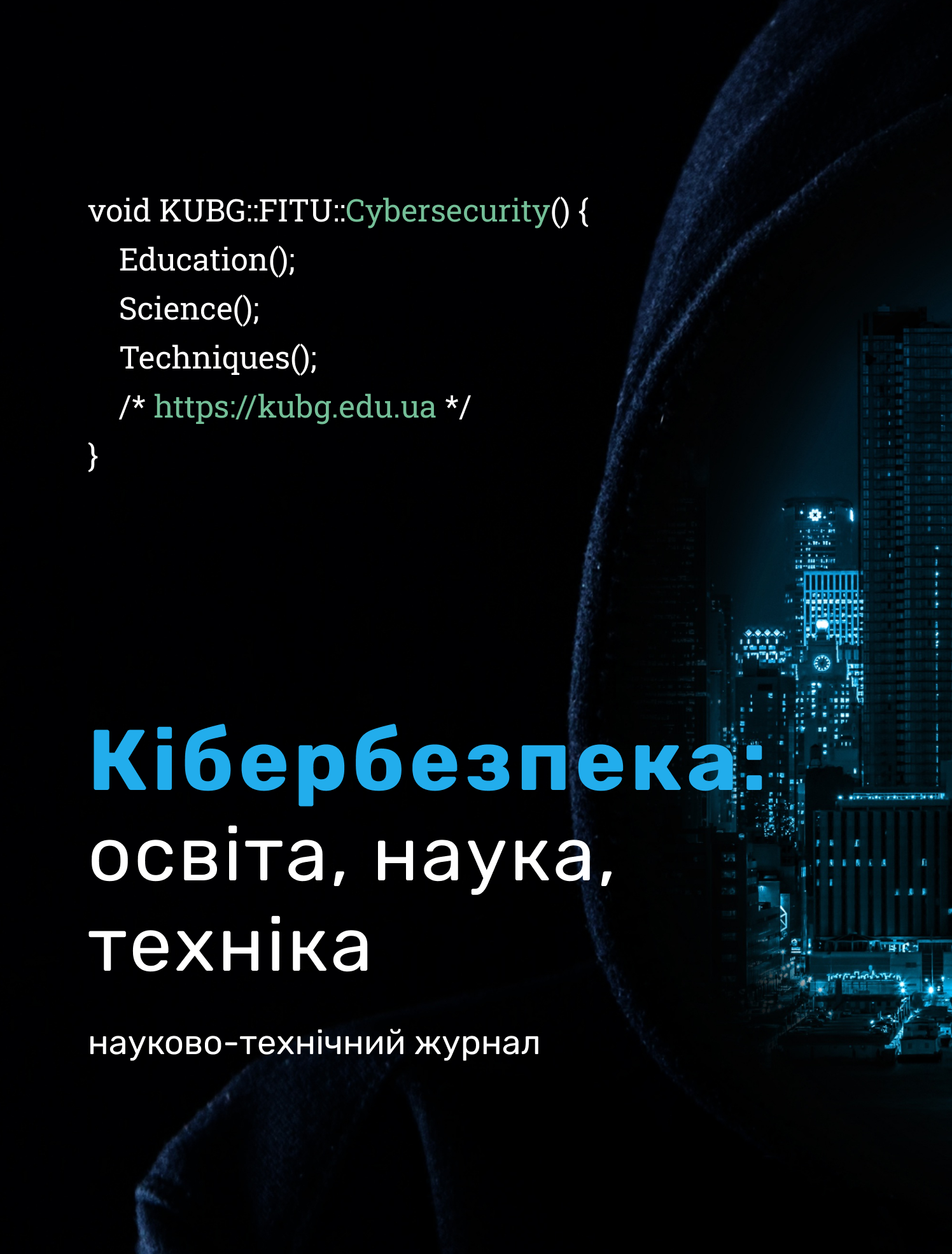БАЄСІВСЬКИЙ ПІДХІД У НАВЧАННІ ГЛИБИННИХ НЕЙРОННИХ МЕРЕЖ ДЛЯ УПРАВЛІННЯ РИЗИКАМИ КІБЕРФІЗИЧНИХ СИСТЕМ
DOI:
https://doi.org/10.28925/2663-4023.2025.28.785Ключові слова:
кіберфізичні системи; баєсівський підхід; нейронні мережі; моделі глибинного навчання; управління ризиками.Анотація
Дана стаття присвячена дослідженню використання баєсівського підходу при навчанні глибинних нейронних мереж для задач управління ризиками в кіберфізичних системах. Кіберфізичні системи (КФС) є складними комплексами, що об'єднують обчислювальні та фізичні компоненти та вимагають чіткого підходу до управління безпекою та ризиками. Традиційні методи оцінювання загроз і вразливостей часто не враховують високого рівня невизначеності, властивого складним середовищам з динамічною природою кіберзагроз. Натомість баєсівський підхід забезпечує імовірнісне моделювання та дозволяє інтегрувати апріорні знання про систему в процес навчання нейронних мереж.
У роботі пропонується детальний огляд теоретичних основ баєсівських нейронних мереж (Bayesian Neural Networks, BNNs), порівняння їх з класичними детермінованими моделями глибинного навчання та приклади застосування для адаптивної оцінки ризиків.
Проведено аналіз існуючих методів варіаційного баєсівського підходу, а також їх роль у підвищенні точності та надійності прогнозування потенційних загроз. Розглянуто основні етапи методології дослідження, включаючи проєктування архітектури нейронної мережі, вибір апріорних розподілів та схеми тренування з використанням стохастичних градієнтних методів.
У результатах наведено експериментальні оцінки та порівняння з класичними підходами, а також продемонстровано практичні аспекти реалізації баєсівських BNNs для реальних КФС. Обговорення висвітлює переваги та недоліки баєсівського підходу, підкреслює необхідність урахування невизначеностей і пропонує напрями подальших досліджень. Окрему увагу приділено використанню змінної якості даних від сенсорів та механізмам реакції системи на динамічні умови в контексті оцінки ризиків.
Наведені висновки та практичні рекомендації можуть стати основою для впровадження описаних методів у різноманітні застосування, такі як промислова автоматизація, інтелектуальні транспортні системи, критична інфраструктура тощо.
Завантаження
Посилання
Lee, E. A. (2008). Cyber Physical Systems: Design Challenges. Proceedings of the 11th IEEE International Symposium on Object-Oriented Real-Time Distributed Computing (ISORC), 363–369. https://doi.org/10.1109/ISORC.2008.25
Baheti, R., Gill, & H. (2011). Cyber-physical systems. The Impact of Control Technology. IEEE Control Systems Society, 161–166. https://ieeecss.org/
Guan, X., Luh, P. B., & Wang, D. (2013). Cyber-physical systems: the next computing revolution for integration of knowledge, control, and services. Proceedings of the ACM/IEEE 4th International Conference on Cyber-Physical Systems (ICCPS), 160–169. https://doi.org/10.1145/2502524.2502530
Cárdenas, A. A., Amin, S., & Sastry, S. (2008). Research challenges for the security of control systems. Proceedings of the 3rd USENIX Workshop on Hot Topics in Security (HotSec), 6–11. https://www.usenix.org/conference/hotsec-08
Neal, R. M. (1996). Bayesian Learning for Neural Networks. Springer. https://doi.org/10.1007/978-1-4612-0745-0.
Blundell, C., Cornebise, J., Kavukcuoglu, K., & Wierstra, D. (2015). Weight Uncertainty in Neural Networks. Proceedings of the 32nd International Conference on Machine Learning (ICML), 1613–1622. http://proceedings.mlr.press/v37/blundell15.html
Kushnir, I., Lesyk, V., & Panasiuk, R. (2021). Secure Communication in Cyber-Physical Systems. Cybersecurity Providing in Information and Telecommunication Systems, 12–28. https://doi.org/10.1007/978-3-030-65722-2_2
Gal, Y., & Ghahramani, Z. (2016). Dropout as a Bayesian approximation: Representing model uncertainty in deep learning. Proceedings of the 33rd International Conference on Machine Learning (ICML), 1050–1059. http://proceedings.mlr.press/v48/gal16.html
Kingma, D. P., & Welling, M. (2013). Auto-Encoding Variational Bayes. arXiv preprint. https://arxiv.org/abs/1312.6114
Goodfellow, I., Bengio, Y., & Courville, A. (2016). Deep Learning. MIT Press. http://www.deeplearningbook.org/
Bishop, C. M. (2006). Pattern Recognition and Machine Learning. Springer. https://doi.org/10.1007/978-0-387-45528-0
Abadi, M., Barham, P., & Chen, J., et al. (2016). TensorFlow: A system for large-scale machine learning. Proceedings of the 12th USENIX Symposium on Operating Systems Design and Implementation (OSDI), 265–283. https://www.usenix.org/conference/osdi16/technical-sessions/presentation/abadi
MacKay, D. J. C. (1992). A Practical Bayesian Framework for Backpropagation Networks. Neural Computation, 4(3), 448–472. https://doi.org/10.1162/neco.1992.4.3.448
Graves, A. (). Practical Variational Inference for Neural Networks. Advances in Neural Information Processing Systems (NIPS), 2348–2356. https://proceedings.neurips.cc/paper/2011/hash/7eb3c8be3d41
e8ebfab08eba5f49632-Abstract.html
Jordan, M. I., Ghahramani, Z., Jaakkola, T. S., & Saul, L. K. (1999). An introduction to variational methods for graphical models. Machine Learning, 37(2), 183–233. https://doi.org/10.1023/A:1007665907178
Keras. Deep Learning library for Python. (n. d.). https://keras.io/
Yu, W., Liang, F., & He, X., et al. (2018). A survey on the edge computing for the Internet of Things. IEEE Access, 6, 6900–6919. https://doi.org/10.1109/ACCESS.2017.2778504
Kendall, A., & Gal, Y. (2017). What Uncertainties Do We Need in Bayesian Deep Learning for Computer Vision? Advances in Neural Information Processing Systems (NIPS), 5574–5584. https://proceedings.neurips.cc/paper_files/paper/2017/hash/2650d6089a6d640c5e85b2b88265dc2b-Abstract.html
Welling, M., & Teh, Y. W. (2011). Bayesian learning via stochastic gradient Langevin dynamics. Proceedings of the 28th International Conference on Machine Learning (ICML), 681–688. http://proceedings.mlr.press/v28/welling13.html
Qiu, M., & Gai, K. (2020). Reinforcement learning and green communications: The synergy of machine learning and holomorphic encryption. Future Generation Computer Systems, 110, 660–670. https://doi.org/10.1016/j.future.2019.09.017
Wilson, A., & Knowles, D. (2016). Adversarial Variational Bayes: Unifying Variational Autoencoders and Generative Adversarial Networks. arXiv preprint. https://arxiv.org/abs/1611.00328
Doshi-Velez, F., & Kim, B. (2017). Towards A Rigorous Science of Interpretable Machine Learning. arXiv preprint. https://arxiv.org/abs/1702.08608
Hinton, G. E., & Van Camp, D. (1993). Keeping the neural networks simple by minimizing the description length of the weights. Proceedings of the 6th Annual ACM Conference on Computational Learning Theory (COLT), 5–13. https://doi.org/10.1145/168304.168306
Rybalchenko, L. V., & Gaborets, O. A. (2024). Prokopovych-Tkachenko D.I. Cyber resilience: global threats and national cyber defence strategies. Bulletin of the Academy of Customs Service of Ukraine. Systems and technologies, 2(68), 95–101.
Prokopovych-Tkachenko, D. I., Zverev, V. P., Bushkov, V. G., & Khrushkov, B. S. (2025). Phishing attacks on encrypted messengers: methods, risks and protection recommendations (on the example of Signal messenger). Cybersecurity: Education, Science, Technology, 3(27), 320–328. https://doi.org/10.28925/2663-4023.2025.27.734
Опубліковано
Як цитувати
Номер
Розділ
Ліцензія
Авторське право (c) 2025 Дмитро Ігоревич Прокопович-Ткаченко, Людмила Володимирівна Рибальченко

Ця робота ліцензується відповідно до Creative Commons Attribution-NonCommercial-ShareAlike 4.0 International License.




